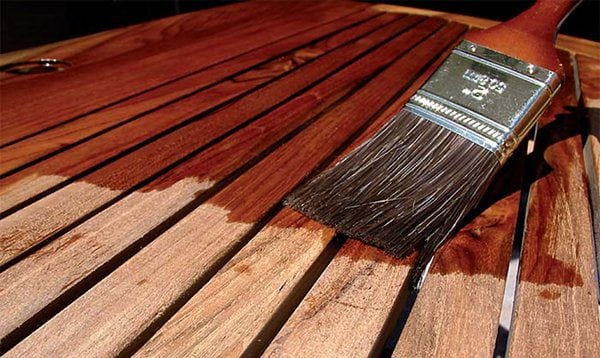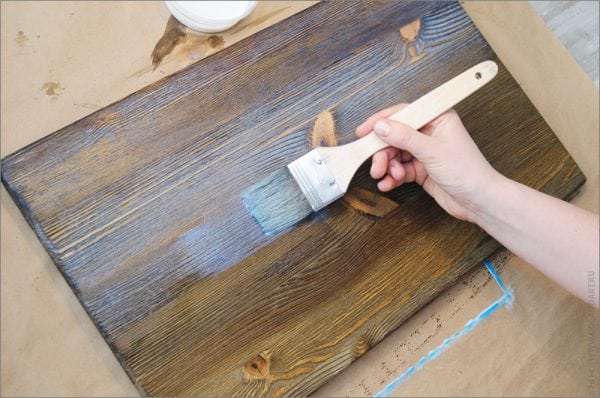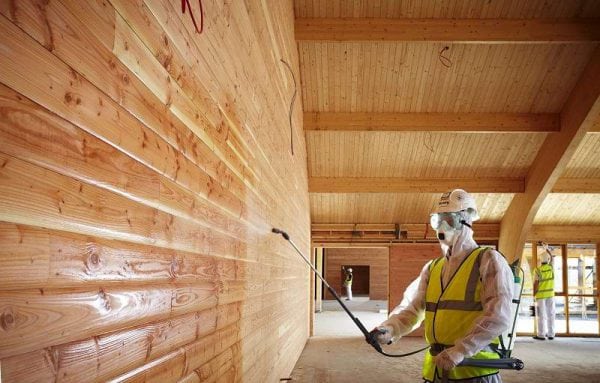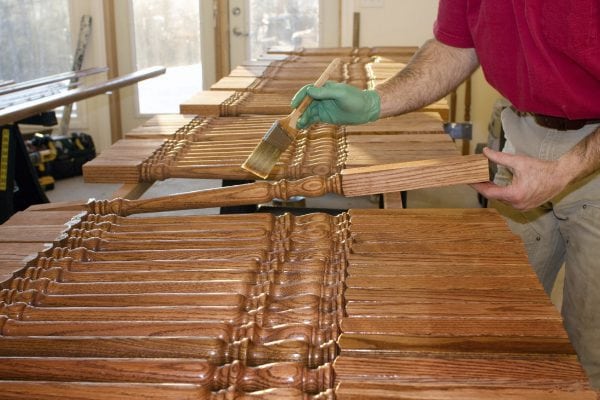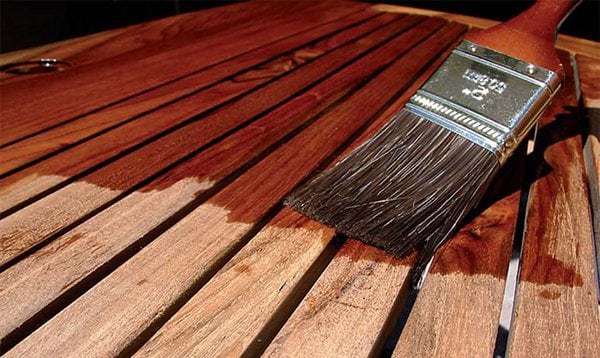Wood is a very vulnerable material subject to the harmful effects of the external environment. First of all, the tree is afraid of moisture, as well as mold and fungus. In addition, wood is characterized by increased absorption of not only water, but also paints and varnishes. The primer for wood for painting allows you to solve all these problems. The properties and varieties of soils, as well as methods for their application will be discussed in this article.
- Tasks of primers
- Varieties of primers
- Primer Selection Criteria
- Preparation of a wooden surface for painting
- According to old paint
- For fresh wood
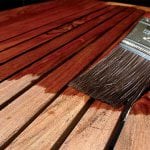
Tasks of primers
Primers for wood can perform many tasks:
- Wood disinfection. Inexpensive, and therefore popular varieties of wood are prone to putrefactive processes. Rotting occurs as a result of wood contact with water or under the influence of high humidity. The antiseptic, which is part of the primer, avoids the formation of mold that destroys the material.
- Strengthening the surface layer. The soil reinforcing properties are especially useful for old wood. The primer contains special resins that hold wood fibers together.
- Decrease in the absorbing qualities of wood. Without a wood primer, a large part of the paint or varnish will be wasted, soaking in the pores of the material. The primer closes the pores, thus preventing the excessive consumption of the paintwork composition.
- Thanks to the soil, a protective film forms on the surface, which protects the wooden product from moisture, corrosive and putrefactive processes.
- Wood contains a natural dye called tannin. Through the pores, this substance often goes outside, as a result of which ugly spots appear on the walls of the house or on the floor. The primer, as already mentioned, blocks the pores, preventing the dye from exiting.
- Primers make the coating rougher, which positively affects the adhesive qualities of the material.
- Sometimes paint is applied directly to an old painted surface. As a result, the old coating is often noticeable, despite the layers of new paint. To avoid such an unpleasant effect, soil of the corresponding color will help.
Varieties of primers
Primer compositions are usually classified according to two criteria, which include functionality and composition.
By functionality, such soils are distinguished:
- Antiseptics that provide protection against microorganisms. Such drugs kill pests that are already in the wood, and also prevent the emergence of new ones.
- Reinforcing compounds (the so-called primers or, in other words, primers of deep penetration) are intended for hardening the material. Such impregnations are usually versatile, as they can be used not only for wood surfaces, but also for strengthening other materials, such as brick or plaster.
- Hydrophobic primers prevent excessive wetting of the material. They are used to decorate the facade of the building, as well as to protect rooms operated in high humidity.

The composition of the soil is classified as follows:
- Penetrating acrylic compositions. Such primers are suitable for any type of paint, since they are almost completely absorbed into the material.The advantage of acrylic is the absence of an unpleasant odor, quick drying (from 1 to 4 hours). Such formulations can be diluted with plain warm water. Acrylic primers are used, primarily indoors.
- Silicone-acrylic compounds are distinguished by high hydrophobic qualities. The primed surface is characterized by a stable level of humidity, regardless of the indicator of humidity in the environment.
- Alkyd primers are used before staining with alkyd paints. Primers in this category are similar in composition to enamels, but include a large proportion of the solvent, and therefore dry faster. Alkyd formulations are ideal for previously painted surfaces. Pigmented alkyd primers exist to create a matte finish. The drying time of alkyd soils ranges from 12 to 18 hours.
- Polyvinyl acetate primers are quick to dry - from 30 minutes. After the surface dries, it should be treated with PVA glue, which will improve the adhesion of wood.
- Polyurethane compounds are not the cheapest and are used to impregnate parquet before applying paints and varnishes based on polyurethane resins. Like alkyd soils, polyurethane compositions are different from varnish, only in the proportions of the solvent contained in them and the absence of tinting additives.
- Shellac primers are used for smoothing wooden surfaces, as well as stopping places where resin flows from. Also, this substance can act as an insulating component in soluble stains.
- For oil paints, drying oil often acts as a stain. This substance impregnates the wood surface by several millimeters, which protects the material from moisture and decay. Drying oil also provides excellent adhesive qualities.
to contents ↑Note! An important property of the soil is its transparency. Colorless primers are most popular among consumers.
Primer Selection Criteria
When choosing a primer composition, one should proceed from the following factors:
- The location of the primer is on the street or indoors. For some types of soils, street conditions can adversely affect indicators such as adhesion and drying speed. For areas with high humidity, it is necessary to choose primers with the maximum hydrophobic effect.
- The wood primer for painting should be selected taking into account the time factor. Acrylic primer dries most quickly in the open air. If the work is carried out in the hot season, it is recommended to prime the surface in the morning or afternoon, when the air temperature is higher. It should be borne in mind that alkyd compositions dry quickly, but they must be applied in several layers. Unlike acrylic, alkyd primers can be primed in one coat.
- What will the primer be coated with - paint or varnish. A much more difficult task is the priming of the surface under the varnish. In this case, the primer should emphasize the natural woody pattern, and not hide it. Before varnishing, it is critical to smooth the surface as much as possible and remove the lint. In addition to the main soil, you can treat the surface with liquid wax or talc. The primer composition can be made with your own hands. To do this, you will need drying oil, turpentine, chalk and dye.
Preparation of a wooden surface for painting
The quality of work depends not only on the chosen soil, but also on how carefully the preparatory stage was carried out (cleaning from debris, dust, grinding the surface). Preparatory work differs depending on the type of substrate to be primed.
According to old paint
If the type of old paint matches the one to be applied, a complete surface cleaning is not necessary. We remove alkyd, oil paints, as well as nitro enamel with the help of sandpaper. The task is to ensure surface roughness. We remove the exfoliated wood with a spatula, and then grind such places.
If the colors of the paints do not match, apply a separating layer of soil of the appropriate type. We apply paint only after the final drying of the primer.If the old coating differs from the new one in the composition of paint or varnish (for example, instead of alkyd paint it is planned to cover the surface with oil), we heat the surface with a building hairdryer and remove the coating with a metal spatula.
The remaining traces of paint are removed with a solvent. Next, primer the surface - we begin with an antiseptic treatment, and finish with a primer before painting.
to contents ↑Note! Antiseptic components are added to the composition of many universal soils. Also, an antiseptic can be added independently to an aqueous soil solution.
For fresh wood
In this case, you need to perform the following sequence of actions:
- We make grinding and surface cycling.
- We close cracks and other defects with acrylic putty. The choice of this type of putty is due to its elasticity. Acrylic fillings do not cause cracks when resizing wood.
- We remove the dust and primer the surface. The primer is applied to the wood with a brush, roller or spray gun. If we use an acrylic based primer, then, in addition to the first layer, you will need one or two more.
So, in the primer of a tree before painting, there is nothing complicated. You should not just buy the cheapest soil. It is better to save a little on the paintwork material than on the primer.

